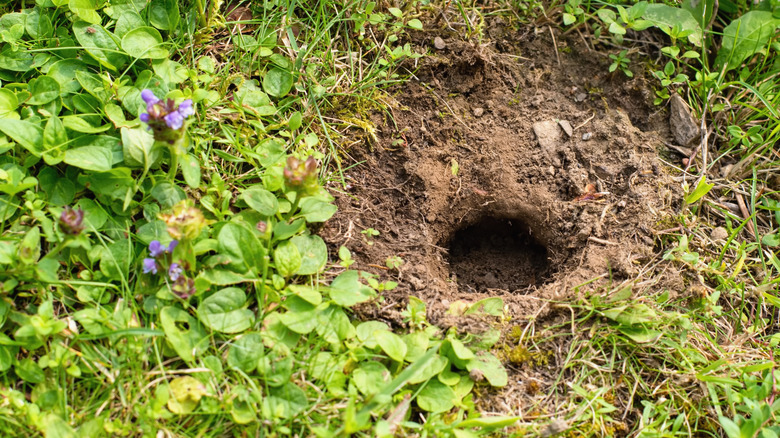Why The Time Of Year Matters When Identifying Unwanted Critters In Your Yard
Yards tend to attract all kinds of uninvited guests: Raccoons, moles, voles, skunks, squirrels, and more can all find their way into your garden. Few things are more frustrating than waking up to find dug-up patches of grass, mysterious tunnels, or chewed-up plants. And while it might be tempting to jump straight to solutions, the first step to protecting your yard is knowing exactly what's causing the damage. Luckily, the time of year can be a huge clue when it comes to figuring out which pest is destroying your garden, since many of them are only active (or at least most active) during certain seasons.
For example, grubs (which also attract other pests, such as moths and raccoons) are most commonly found during spring and early summer. Moles tend to be more active in spring and fall, when the soil is moist and full of earthworms. Squirrels are also busy in fall, storing food and potentially digging up your flower beds in the process. Meanwhile, voles are more active during winter under snow cover, whereas armadillos and other burrowers may make appearances in warmer months. Each of these common garden pests has a seasonal rhythm, and understanding when they're likely to show up gives you a head start in properly addressing the issue.
Animal activity varies depending on the season
Using the time of year as a reference point can really narrow down the list of suspects. For example, if you're seeing torn-up turf in early spring, it's likely moles or raccoons. Shallow tunnels in winter? Probably voles. Late summer root damage might suggest grub-hungry animals. But seasonal timing alone isn't always enough — you'll also want to consider other common tell-tale signs. Holes versus tunnels, day versus night activity, and even droppings can all help confirm the culprit. The time of year is just one major factor in positively identifying the critters you're dealing with and deciding on the right method to fight them.
If the time of the year still isn't doing much to point you to the most likely suspect, try stepping up your identification game by catching them on camera. Motion-activated cameras can capture what's really happening in your yard when you're not looking, especially at night when you're asleep but many critters are active. And if you're still stumped, don't hesitate to call a professional. Pest control experts can assess the situation quickly and help you choose the right plan of action to keep critters out of your yard.

